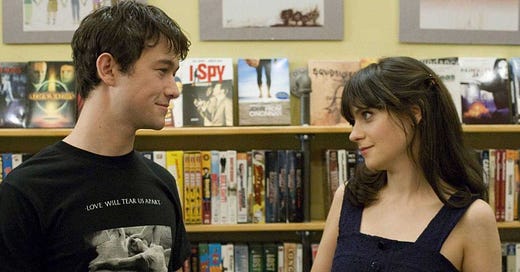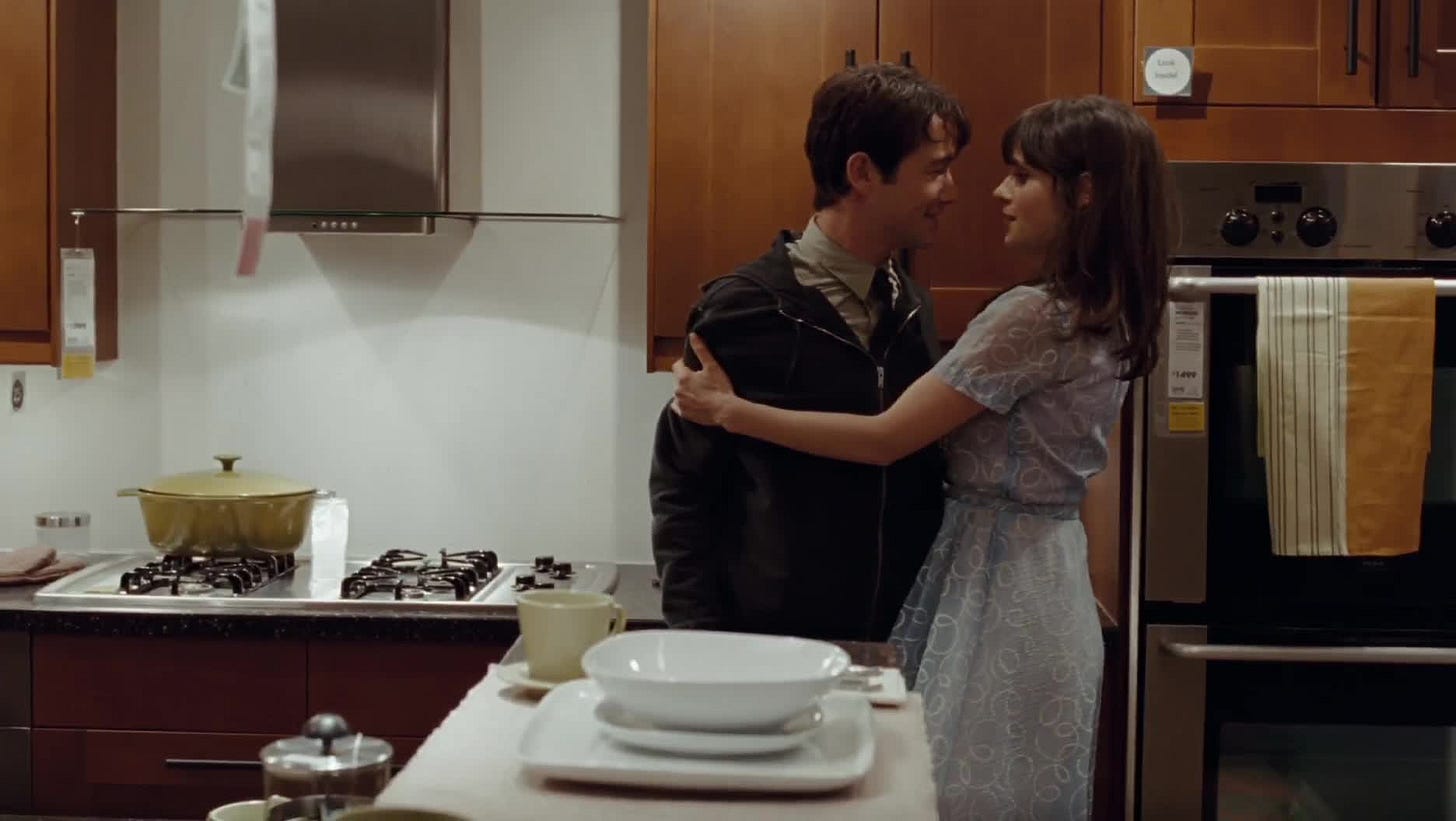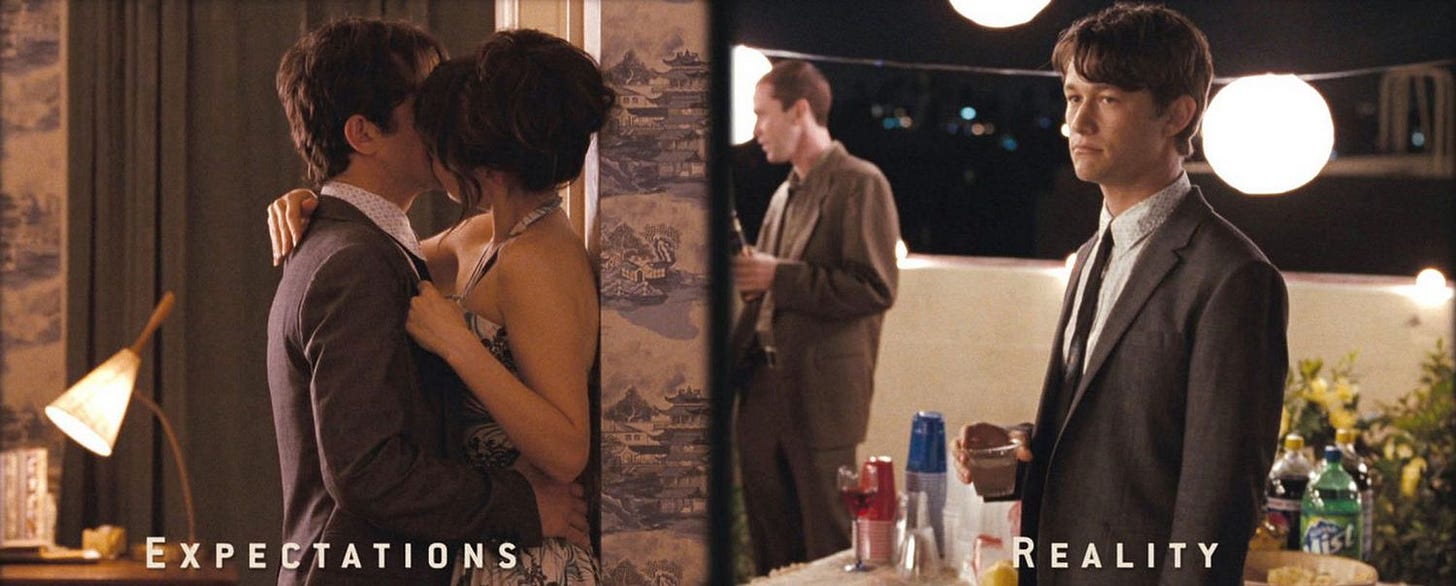Truth and Perspective in "(500) Days of Summer"
Causality, Conflict, and Temporal Order- oh my!
Below is one of many essays I have written around films studied ad nauseam. For a film studies class, my professor had asked for a narrative analysis of one film from a long list. While I thought analyzing a film I had already seen would be easy, I could not be more wrong. What came out of this study was a deeper understanding of narratives and the many factors in film production that move them along.
Will this essay get an A? Not sure. But I’ve spent far too much time on it for only one person to read it. Please enjoy!
Warning: This essay will include spoilers for the entirety of (500) Days of Summer.
“This is not a love story.”
It isn’t common for one of the first sentences uttered in a film to sum up the entire narrative in a mere few seconds. However, in (500) Days of Summer, it creates a tone that will dictate the audience response for the rest of the film, instilling doubt in the positive moments and removing surprise in the negative. This emotion follows the main characters Tom and Summer in their interactions- it permeates through every kiss and argument as they navigate their own definitions (or lack thereof) of love and relationships. Through the hierarchy of knowledge, causality, and temporal order, (500) Days of Summer establishes a story that’s creates anticipation while also being painfully unsurprising.
The film itself primarily follows Tom, an employee at a greeting card company in his meeting and relationship with Summer, his boss’ new assistant who would end up catching his attention. The film’s plot revolves around the 500 days in which the two have known each other, but the order of the scenes is nonlinear. Before the majority of the scenes, the screen will display which day number it is, starting on the day Tom and Summer first meet during a work meeting. This scene, however, is not the first scene in which we see Tom and Summer together. Tom is introduced on Day 1, but the two of them are first seen together on Day 290, with Tom breaking plates and Summer suggesting they no longer see each other. While the cause of their fighting is not explained one bit, the audience has an aftermath to look forward to as they’re brought back to Day 1.
The temporal order of most of the film’s scenes are in a loose chronological order, with time skips ranging from one day to nearly half a year. Occasionally, a jump would occur to show an effect and then cut back to closer to the time of the previous scene to set up a cause or explanation. Such an instance occurs after a scene on Day 31- the day Summer first kisses Tom. The film jumps to Day 282 to show Tom and Summer in IKEA, Tom joking about the sinks being broken as if he’s playing house and Summer expressionlessly following him. The film falls back near the previous scene to Day 34, showing the two of them mutually joking about broken sinks at the IKEA in a playful and eager fashion. There is no explanation as to why Summer is dejectedly going about the store on Day 282 despite her cheer on Day 34, and this lack of a cause is what drives the audience to continue watching the film.
It would be unwise to continue analyzing (500) Days of Summer without taking time to quickly perform a biopsy on its main characters and an autopsy on their relationship with each other. Tom is a horribly hopeless romantic who falls in love with Summer, someone who expresses multiple times how she does not wish to have a committed relationship. Summer reiterates her desires at multiple points, specifically on Day 28 when the office goes out to karaoke and Day 34 when her IKEA trip with Tom goes especially well. Tom initially expresses acceptance of Summer’s wish to be casual, but he knows he cannot handle the pressure on his own wants. The difference in their goals is what drives the main conflict, and what they choose to communicate and withhold furthers it.
The causality of the film’s events goes all the way back to these first key interactions and the misconstrued nature of their interpretations. On the aforementioned Day 31, Summer kisses Tom for the first time, leaning in while they wait for the copy machines without a word. Tom is convinced that his idea of falling in love is now a reality, ignoring their previous conversation in which she states her idea that love may not even be real to her. While this interaction kickstarts their bond further than their declaration of friendship just a few days prior, it could also be the cause for the future conflicts regarding their relationship status. Tom is irritated by the idea of casually dating Summer and expresses this irritation through angry outbursts, while Summer’s frustration with Tom’s insistence on commitment is usually quiet without any direct confrontation. The conflict is driven by their two differing interpretations of the same interactions.
Before any of this occurs, though, the first scene with Day 290 sets up audience knowledge that the main characters will argue and eventually separate. As the film jumps to the first day of the plot, the characters’ knowledge is reflected in that time difference. Also, before Day 290 (or even the opening credits), the film opens with the idea that the film is not what it was misconstrued to be. The audience knows that the film is not a love story before the characters have even met, playing into the film’s hierarchy of knowledge.
The point of view of the film also changes this hierarchy; most of the knowledge the audience receives is through Tom. The story of the film follows Tom and how he is affected by his relationship/friendship/unspecified-third-thing with Summer. At first, the film seems neutral in its storytelling, but as it progresses it becomes clearer that it reflects how Tom sees the world. After Tom and Summer first have sex, his world becomes a choreographed wonderland of animated birds and magically diegetic music. It is never examined through Summer’s point of view- the audience has no knowledge of how she is processing her emotions or even what her emotions may be.
It also becomes increasingly apparent that Tom is acting as an unreliable narrator in the film, and this is shown in two related scenes in the first and third acts. Early in the film during a scene on Day 154, Tom lists what he loves about Summer in a voiceover of her laying on a bed comfortably, listing traits such as her eyes, her knees, and her birthmark. In a scene later in the film occurring on Day 322, he lists those same characteristics as things he hates about her. If this scene was earlier in the film, blame would immediately be placed on Summer without the information of the conflicts that caused their falling out. However, this scene is placed after all of their major fights to show how Tom was incorrectly interpreting his relationship with Summer and acting out of line.
Another scene that demonstrates this manipulation of the hierarchy of knowledge is a split screen scene on Day 409 at a party Summer hosts. The screen is divided, with one side showcasing Tom’s expectations and the other displaying the true events. The scene is also treated like a montage, with the events of the entire party edited for brevity overlaid with “Hero” by Regina Spektor. On the “expectations” side, the party is more intimate and Tom spends most of his time with Summer, even sneaking away with her to kiss away from the party. On the “reality” side, Summer is occupied with other guests as Tom is forced to socialize with a crowd of partygoers. He spots Summer out of the corner of his eye as she shows off her engagement ring. The true story starts to put itself together: While Tom was forcing a relationship with Summer, he missed out on the meaningful friendship with her and the ability to see both the person she truly is and the person she’s become.
As Tom gets out of his head and sees the reality for what it is, the screen’s split moves to only show the reality. This is not acceptance, however, and the non-diegetic music reflects this state as the lyrics to “Hero” repeat, “I’m the hero of the story, don’t need to be saved”. In truth, Tom has always had the ability to only see the parts of the story that he wishes to, and it’s even joked about in his introduction in the very beginning. He never believed he could be truly happy until he found his soulmate, and one of the causes of this belief is a “total misreading of the movie “The Graduate”.” The audience is made aware of this ability to misinterpret, but it is mentioned so quickly that it could easily be forgotten or disregarded. However, to those who paid attention to that moment and kept that information in their heads, none of the events of the film are truly that surprising.
Whether it’s the anticipation created by the temporal order of the scenes or the ways that the hierarchy of knowledge is manipulated by point of view, (500) Days of Summer showcases a story that, at its core, is a human one. Tom and Summer were never truly meant to be, and the causality stems from just how different they were and the tugs they made into whichever direction they wished. The multiple ways in which the film can be viewed are all valid forms of interpretation, yet they are all influenced by Tom’s predominantly unreliable point of view. So, the narrator was correct: This is not a love story, but to many, it is a true one.







Okay truth be told, haven’t seen the movie! So i’m gonna watch it and come back to read :)